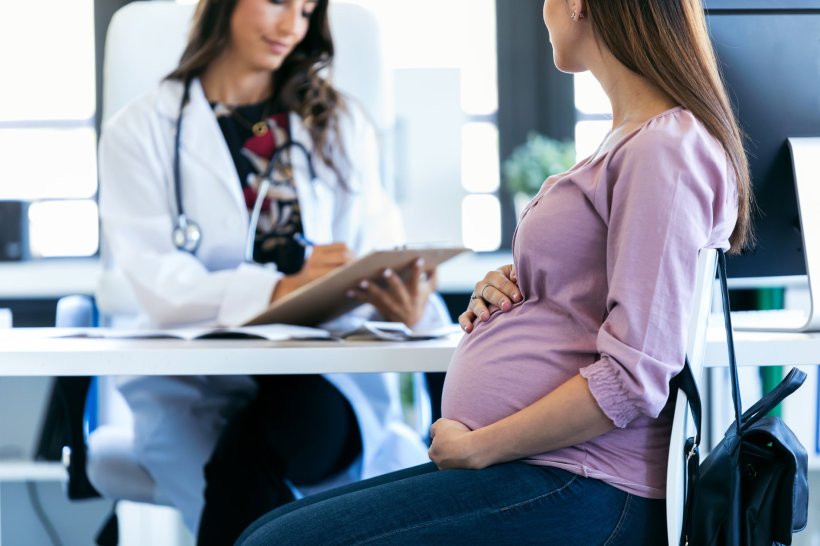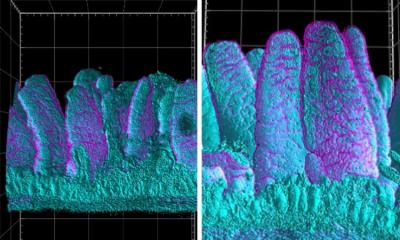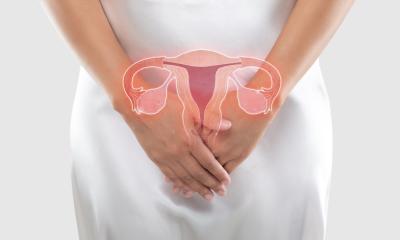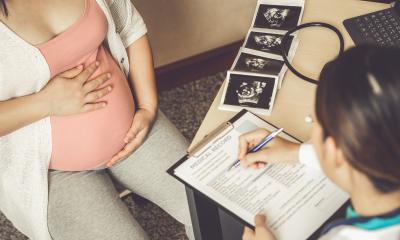
Image source: Adobe Stock/nenetus
News • Pregnancy complications
New model could predict preterm births from around week 31
Preterm birth, which occurs when a baby is born before 37 weeks of gestation, affects nearly 10% of pregnancies worldwide, and rates are on the rise. Researchers in the McKelvey School of Engineering at Washington University in St. Louis are developing better ways to predict preterm birth by analyzing electrical activity during pregnancy.
Arye Nehorai, the Eugene & Martha Lohman Professor of Electrical Engineering in the Preston M. Green Department of Electrical & Systems Engineering, and Uri Goldsztejn, who earned a master’s and a doctorate in biomedical engineering from Washington University in 2020 and 2022, respectively, developed a model using deep learning to predict preterm births as early as 31 weeks of pregnancy. Results of the research were published in PLoS One. “Our method predicts preterm births using electrohysterogram measurements and clinical information acquired around the 31st week of gestation with a performance comparable to the clinical standards used to detect imminent labor in women with symptoms of preterm labor,” Nehorai said.
Preterm birth is an abnormal physiological condition, not just a pregnancy that happened to end early
Arye Nehorai
To design their method, Nehorai and Goldsztejn used measurements from electrohysterograms (EHG), a noninvasive technique that detects uterine electrical activity through electrodes placed on the abdomen, as well as clinical information from two public databases, such as age, gestational age, weight, and bleeding in the first or second trimester. They trained a deep learning model on data from 30-minute EHGs performed on a total of 159 pregnant women who were at least 26 weeks’ gestation. Some recordings were obtained during regular check-ups while others were recorded from mothers who were hospitalized with symptoms of preterm labor. Of all the women, nearly 19% delivered preterm. “We predicted the pregnancies’ outcomes from EHG recordings using a deep neural network, because neural networks automatically learn the most informative features from the data,” Goldsztejn said. “The deep learning algorithm achieved a better performance than other methods and provided a good way to combine EHG data with clinical information.”
The team trained its deep recurrent neural network with data samples that indicated their respective pregnancy outcome to learn features from the data that predicted those outcomes.
The work — the first method to predict preterm births as early as 31 weeks using the EHG measurements that achieves a clinically useful accuracy — builds on previous work from Nehorai’s lab and published in PLoS One. In the earlier study, Nehorai and his collaborators developed a method to estimate electrical current in the uterus during contractions using magnetomyography, a noninvasive technique that maps muscle activity by recording the abdominal magnetic fields that electrical currents in muscles produce. It also builds on new research by Nehorai and Goldsztejn recently published in Biomedical Signal Processing and Control that details a statistical signal processing method to separate uterine electrical activity from baseline electrical activity, such as from the woman’s heart, in multidimensional EHG measurements to identify uterine contractions more precisely
In their research, Nehorai and Goldsztejn found that various components of the EHG measurements contributed to their model’s predictions. Higher frequency components of the EHG measurements were more predictive of preterm births. They also found that their model was effective in prediction with shorter EHG recordings, which could make the model easier to use, more cost-effective in a clinical setting and possibly usable in a home setting. “Preterm birth is an abnormal physiological condition, not just a pregnancy that happened to end early,” Nehorai said. “Therefore, we can expect that physiological measurements, such as EHG recordings, may show a stronger dichotomy between pregnancies that end with either preterm or term deliveries than is shown in continuous characteristics correlated with gestational age at delivery.”
Going forward, Nehorai and Goldsztejn plan to develop a device to record EHG measurements and to collect data from a larger cohort of pregnant women to improve their method and validate results.
Source: Washington University in St. Louis
02.06.2023










